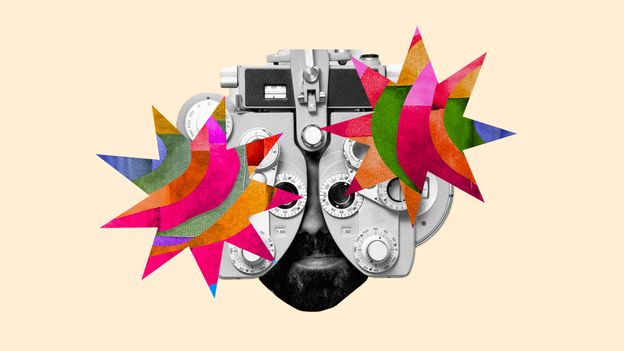
Exploring the Connection Between Synaesthesia, Memory, and Language Learning
Synaesthesia, a unique neurological phenomenon, is known to enhance memory and facilitate learning. Recent studies suggest that perceiving colors could significantly assist individuals in acquiring a second language.
Many synaesthetes, including myself, have discovered their affinity for both music and language from a young age. My talents didn’t lie in performance, but rather in composition. I transitioned to composing for short films and dance theatre and became a sound editor in television. To me, writing music resembled a language, as I visualized colors associated with sounds. In my academic journey, studying French, German, Spanish, and linguistics became easier as the colors associated with these languages helped me retain vocabulary and grammatical structures.
"As a child, I recognized that I perceived my surroundings differently, which I often described as ‘colorful,’" shares Smadar Frisch. Frisch experiences grapheme-color synaesthesia, along with sound-color and lexical-gustatory synaesthesia—a condition where words evoke specific tastes. Through her podcast Chromatic Minds, she delves deeper into these sensory experiences and is currently writing a book on the topic.
Frisch recalls, "School was often overwhelming for me due to sensory overload. Solving a math problem felt chaotic, similar to a psychedelic experience with colorful numbers." This vivid explosion of colors often diverted her focus, making it challenging to concentrate.
Frisch’s journey took a turning point when she encountered the book Wednesday is Indigo Blue by Richard Cytowic and David Eagleman during her high school years. Realizing the connection between her synaesthete brain and learning strategies was revelatory. “Using colors as a learning tool transformed my approach to language acquisition,” she explains.
Utilizing a unique color-coding system allowed Frisch to learn new languages more efficiently, feeling organized rather than overwhelmed. Remarkably, she became fluent in French and Spanish within just two months, achieving over 90% on her exams. Now, she speaks seven languages fluently and confidently claims she can master any new language quickly.
Julia Simner, the head of the Multisense Synaesthesia Research lab at the University of Sussex, conducted extensive research involving around 6,000 children to assess the relationship between synaesthesia and language skills. The results indicated that children with synaesthesia displayed enhanced skills beneficial for both primary and second language acquisition, such as improved vocabulary, short-term memory, attention to detail, and creativity.
Furthermore, synaesthetic colors can help individuals remember letters and words across different languages, creating a cross-linguistic color association. "These colors provide a visual scaffold that enables easier recall when learning a new language," Simner emphasizes.
In a 2019 experiment by psychologists at the University of Toronto, participants demonstrated that grapheme-color synaesthetes had a distinct advantage in recognizing patterns, an essential skill for language learning. This suggests that synaesthesia can assist individuals in recognizing language segments more effectively.
For many individuals, synaesthesia enhances sensory experiences. For instance, when I was asked about the French word for "work" in my first week of secondary school, the color blue immediately came to mind. While I might forget the word, I vividly remember its associated color. This extra sensory cue can be a remarkable aid in language learning.
Interestingly, research indicates that synaesthesia is more common among individuals who learn a second language later in life compared to those who are bilingual from early childhood. This finding supports the idea that synaesthesia might develop as a valuable learning tool.
Emerging in childhood, synaesthesia often correlates with learning processes, such as categorizing colors around the same time children begin reading and writing. Researchers propose that children utilize their newfound ability to categorize colors as a creative mechanism to grasp letters and words.
Despite its benefits, synaesthesia can complicate communication. Lucie Bouvet, a psychologist at the University of Toulouse, notes that some individuals may find their experiences disruptive to their perception of the external world. For example, phoneme-color synaesthesia causes some individuals to perceive specific colors with particular sounds, creating a dual-layered cognitive processing system that can sometimes interfere with conversation flow.
Ultimately, investigating synaesthesia offers profound insights into how we process language and sensory information. "Synaesthesia is not just a fascinating phenomenon; it might provide valuable knowledge about broader cognitive profiles," Bouvet concludes.
For those of us living with this beautiful sensory blend, everyday experiences are enriched. Music becomes a captivating journey, the stories we read leap off the page, and language fills the atmosphere with a vibrant tapestry of colors.
For the latest in science, technology, and health stories, follow us on Facebook, X, and Instagram.
Correction: An earlier version incorrectly attributed the writing of Wednesday Is Indigo Blue to Dmitri Nabokov. The authors are Richard Cytowic and David Eagleman. This article was updated on May 25, 2025, to reflect this correction.









